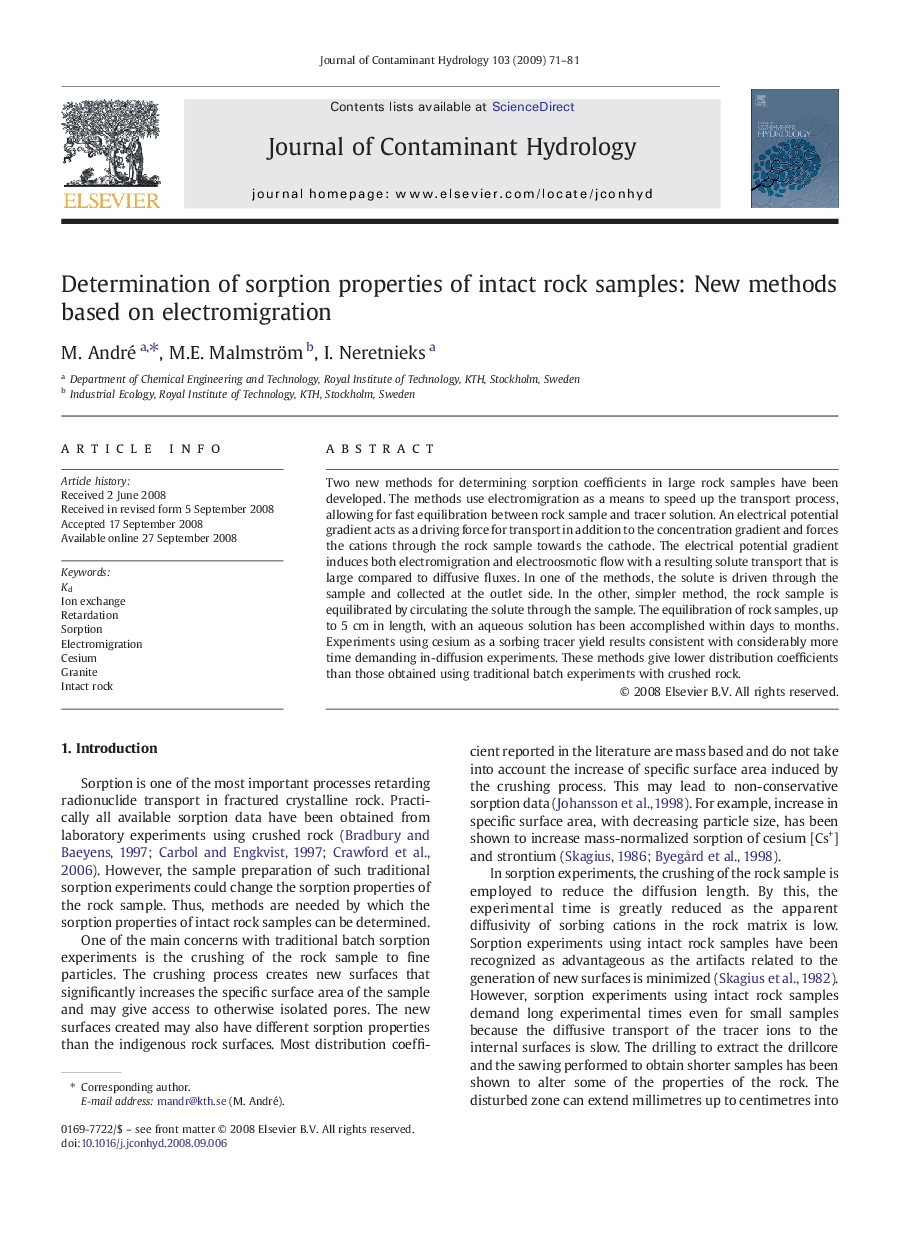| کد مقاله | کد نشریه | سال انتشار | مقاله انگلیسی | نسخه تمام متن |
|---|---|---|---|---|
| 4547266 | 1627104 | 2009 | 11 صفحه PDF | دانلود رایگان |

Two new methods for determining sorption coefficients in large rock samples have been developed. The methods use electromigration as a means to speed up the transport process, allowing for fast equilibration between rock sample and tracer solution. An electrical potential gradient acts as a driving force for transport in addition to the concentration gradient and forces the cations through the rock sample towards the cathode. The electrical potential gradient induces both electromigration and electroosmotic flow with a resulting solute transport that is large compared to diffusive fluxes. In one of the methods, the solute is driven through the sample and collected at the outlet side. In the other, simpler method, the rock sample is equilibrated by circulating the solute through the sample. The equilibration of rock samples, up to 5 cm in length, with an aqueous solution has been accomplished within days to months. Experiments using cesium as a sorbing tracer yield results consistent with considerably more time demanding in-diffusion experiments. These methods give lower distribution coefficients than those obtained using traditional batch experiments with crushed rock.
Journal: Journal of Contaminant Hydrology - Volume 103, Issues 3–4, 26 January 2009, Pages 71–81